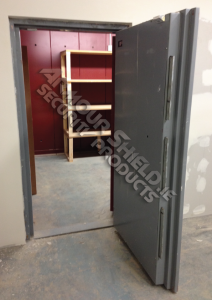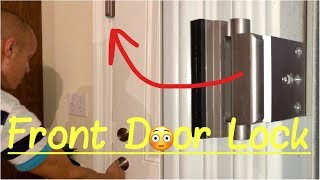
The deadbolt is one of many types of locks. These locks are available in a variety of styles and finishes, so it's important to find the one that best fits your home's design. Here are tips on choosing the best deadbolt.
Both sides of the doorknob keyed
If you're trying to find a way to enhance the security of your doors without sacrificing convenience then you may wish to consider a lock that features keys on both ends. Specialty stores sell these door knobs, which are used a lot in office buildings.
This type can help you leave quickly if you are in a hurry. This lock is a great option if you have a pet, or a child who has been locked out of your home. They can unlock the door for you while you enter.
A Door Lock with a Key on both Sides
They are usually used on windows and doors outside because they increase the security against thieves who break through windows. You can also gain easier access to your home if you are unable to locate your keys or accidentally lock them in.

These locks are not as easy to operate as other deadbolts, and they can take longer for you to unlock. The locks are easy to use if you take your time, but they can be difficult in an immediate emergency.
Smart Lock Keyed on Both Sides
A smart lock is a good option for those who want to upgrade their deadbolt. These electronic deadbolts have a keypad, touchscreen, and can also be controlled from your phone. These electronic locks can be programmed to automatically lock after unlocking or send an alert via your phone in the event that you open the door by accident.
You can also use these locks with a patented key control system, which will make it more difficult for intruders to open them. These locks also have a bumpguard and drill resistance, which will protect them against lock bumping, an attack technique that's used to defeat traditional pin & tumbler locks.
Double Cylinder Lever Lock
They are very popular in both commercial and residential buildings because they provide a high level of security. It is also very simple to re-key them and no special skills are required.
The SmartKey(r), rekeying feature is included in this lock. It's also compatible with most standard door finishes. It is also available in different finishes such as satin chrome and nickel.

Re-keying the lock takes approximately 3 minutes. This makes it ideal for homeowners with limited time who may not be able to do so every time they change homes. The product comes with limited warranty and is constructed from durable zinc.
This lock is also available in various stylish finishes. These include bronze, oil rubbed Bronze, and Antique Brass. Its stylish design and low cost are also great for first-time smart locks shoppers.
FAQ
Are motion sensors capable of triggering alarms?
Since the beginning of time, motion sensor alarm systems have been in use for decades. However, they are becoming more popular as a result of increasing theft and break-ins. These devices are expensive and don't work well in cabinets. However, if you want to protect your home from intruders, then a motion sensor alarm system is definitely worth considering.
What is the cost of a home security system?
A home security system that works well will cost you about $2,500. This may seem like a lot of money, but it is actually very cheap compared to the peace of mind you'll gain by having a safe and secure home.
Which Home Security Systems Cannot be hacked?
The definition of hacking will determine the answer to this question. Hacking refers only to the unauthorized use of computer systems, networks, data, and programs. Home security systems that do not have software that allows for remote control of the system cannot be hacked. They also don't allow anyone to enter your house without permission.
However, some home security systems can be hacked if they are connected to the Internet. These types of systems usually require a password to operate, which means that someone can hack them if he knows the correct password.
Which home security system has the most features?
Ring Video Doorbell Pro features the most of any home security system we reviewed. You can view who is at your doors, talk to them over your phone and record video. You can also save recordings to the cloud with this free service.
What security system would you recommend?
The value of your home and possessions will determine the best security system. An inexpensive alarm system that doesn't offer much protection can be chosen. You can go with a basic alarm system that provides limited protection, but you have the option to upgrade to one that has remote monitoring and video surveillance as well as access control.
Alarm monitoring: How much should I spend?
The cost of alarm monitoring varies depending on the frequency you need it monitored, the equipment you require, and whether an all-inclusive or monthly package is chosen.
Which is the best home surveillance camera system?
If you want to protect your family from intruders, then you should consider buying a home security system with cameras. These systems are very easy to use, and provide many benefits for homeowners and renters. You can also remotely monitor your property from your smartphone, tablet, computer or any other mobile device.
Statistics
- Most home security companies will charge you around 75% of the remaining term of your contract if you cancel early—and some require 100%.Related questionsWhat type of contract length can I expect from security providers?Home security system cancellation (safewise.com)
- That's probably why Cove has a whopping 98%* customer retention rate. (safewise.com)
- Unlike other online safety services that charge up to 100 percent of your monthly fee, Cove charges no upfront fees and has no hidden costs.
- (In my experience, the discount on my home insurance covered about 25 percent of the subscription of an average plan, but your mileage may vary depending on your location and the size of your home.) (theverge.com)
External Links
How To
How to Install A Home Security System
A home security alarm is a device that monitors the property and alerts you in case of any suspicious activity. It could include a motion sensor or doorbell camera, smoke detectors, flood alarms, carbon monoxide detectors, burglar alarms, and flood alarms. A home security system usually consists of one or more sensors (e.g., motion detectors), which send signals when they detect movement or sound. These signals are sent to a control panel, where they can be monitored and recorded. If something goes wrong, like someone breaking in to your house, the control panels sends an alert to your phone or tablet, your computer, or voice assistant. You'll know what's going on and can take action immediately.
It is important to choose the right type and size of sensors to fit your home before installing a security system. There are two main types, passive and active. Passive sensors don't require batteries; they just pick up sounds and vibrations from their surroundings. These include buzzers, sirens and doorbells. Active sensors transmit data using electricity. Examples of such sensors include cameras and motion sensor.
There are many options for sensors. Each brand has its advantages and disadvantages. Some sensors are waterproof, others are not. Some of them have built in speakers so that you can still hear them from outside. Some only work indoors. Some are simple, while others offer advanced features such as night vision.
After choosing the best sensor type for your property you can choose a manufacturer. This will help ensure that your sensors work well together. You will find many options in your local hardware store.
After you have chosen a brand, you will need to decide how many sensors you wish to purchase. Most people start with one or two sensors, depending on whether they live alone or with family members. You may want to consider purchasing more sensors in the future if possible.
Next, think about where you want them to go. Do you want them near doors and windows? Or do you prefer having them hidden away? Before you place them on your property, make sure that you have permission. It is important to ensure they do not interfere with electrical outlets.
After you've determined the location of your sensors, you will need a way that they can be connected to your control panels. Depending on your setup, you may need to purchase a power adapter or battery pack. Once you have everything in place, your property can be monitored!